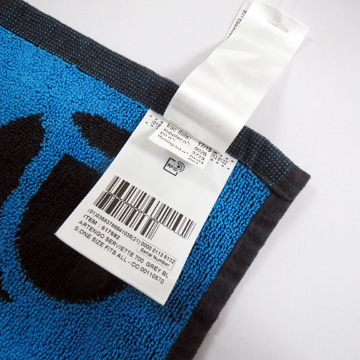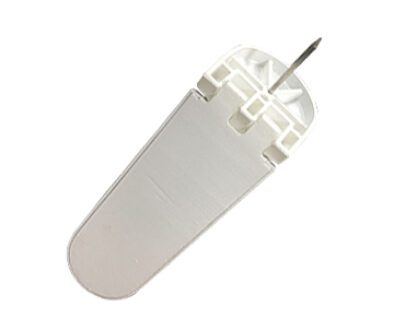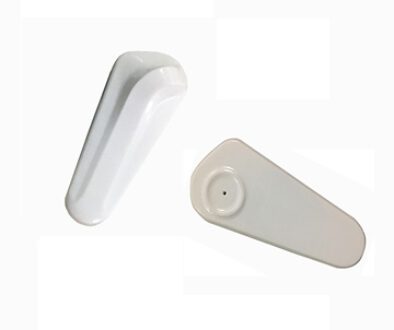Passive RFID Tag
Passive RFID EAS Systems: A Primer
What’s in it?
 A passive RFID EAS system has three basic components: an RFID interrogator or reader, an RFID antenna, and, of course, an RFID tag. It’s practically the same as any other EAS system that uses some form of electronic tags.
A passive RFID EAS system has three basic components: an RFID interrogator or reader, an RFID antenna, and, of course, an RFID tag. It’s practically the same as any other EAS system that uses some form of electronic tags.
Each tag is typically made up of two parts: an antenna and an IC circuit or microchip. It does not have a battery (unlike active RFID tags) and just gets its power from the signal sent by a reader.
How does it work?
The reader sends a signal to the antenna, which converts it into RF waves. The waves are then broadcast within the EAS system’s read zone to be picked up by the tags. Each tag, in turn, uses its internal antenna to convert the waves into energy that is then used by its IC circuit to send a signal back to the reader.
Also known as a backscatter, this return signal is slightly different from the original one. This difference is what ultimately gives the reader all the information that it needs from each tag.
What are its frequency ranges?
Passive EAS systems typically use three frequency ranges: low frequency (LF), high frequency (HF) and ultra-high frequency (UHF).
Despite their very short read ranges, LF waves (125-134 KHz) are extremely long and have the best resistance to interference caused by metal or water. This is why LF tags are commonly used in animal tracking applications.
HF waves (13.56 MHz), on the other hand, fall right smack in the middle in terms of read ranges with its range of up to one meter. They are typically used for data transmission, access control, passport security and pretty much any other similar applications that don’t require long-range readings.
Finally, UHF waves (865-960 MHz) are very short and possess high levels of energy, which gives them a five- to six-meter read range. This makes them perfect for applications like in-store asset or inventory tracking and even race timing.
What do the tags look like?
Passive tags come in all shapes and sizes and are made with all kinds of different materials so there’s no uniform look to speak of. It all depends on what the intended application is. There are tags that are as small and thin as a price tag, but there are also those that are a lot bigger and are made with harder materials like plastic or metal.



